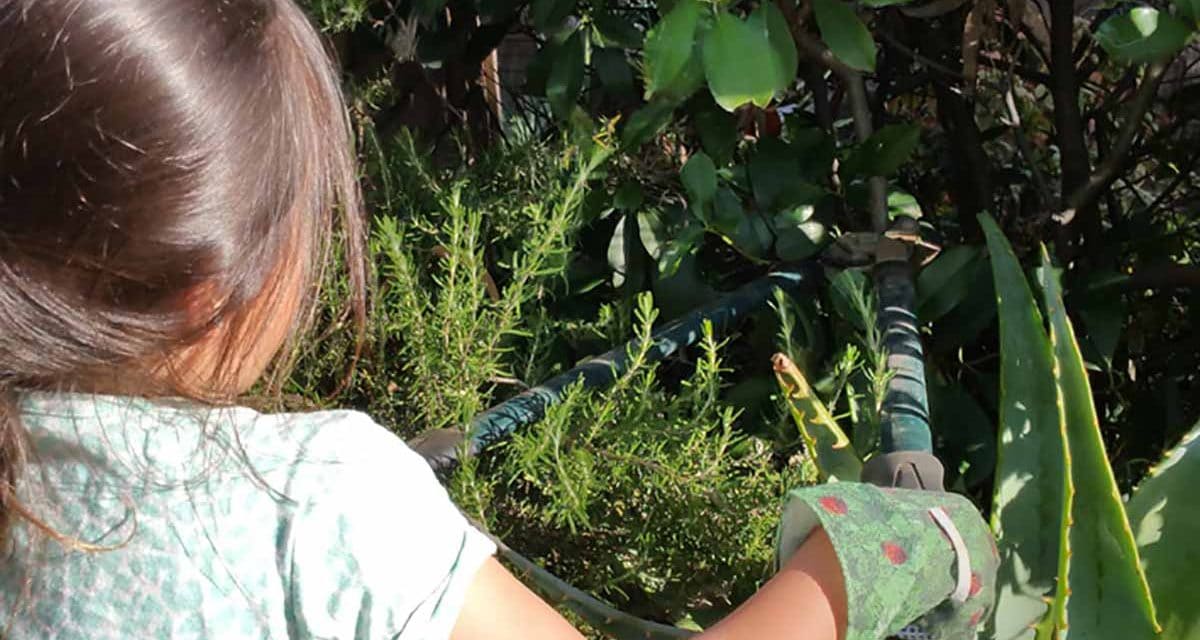No products in the cart yet. Keep shopping.
Gold Star Recyclers – Vilis Family Bakery
Vili's Family Bakery - Gold Star Recycler “I hate waste!” Vili Milisits, South Australian entrepreneur and owner of the iconic Vili’s Bakery, is...

Who would have thought. Gardening has made my family transform.
The other day I heard my 8 year old say to her friend who was over for a a play date “Come outside, I’ll take you on a tour of our veggie garden!”. My husband is regularly updating me with his veggie patch and fruit tree watering schedule and passing comment that “the lemon tree looks like it’s losing leaves. Better go ask Mark what it needs”, through to a particular request this last week from my five year old requesting to buy and plant a banana tree!
A banana tree!
So off we trundled to the Norwood Garden Centre to see Mark and ask him all of our questions. Yes. Would you believe it, you CAN grow a banana tree in Adelaide. But it takes a few years to get to bearing fruit and I didn’t think my five year old son had the stamina. So instead we bought a Hot Banana Chilli!
In addition to the Hot Banana Chilli (I just can’t stop saying it – I love it) we also brought home raspberry’s, passionfruit, watermelon, cucumber, cherry tomatoes and basil. I have been hanging out to get basil in the garden. My first try of basil seeds wasn’t very successful, so I have now put in seedlings. The snails have left it alone so far…
However when Mark handed me the passionfruit plant he told me if I wanted to give it a really good start, to bury a sheep’s liver under it! I couldn“t help but be a little grossed out and unfortunately (luckily) the local butcher was all out of sheep liver, so the kids and I opted to water it in with the same nutrient mix we bought for the lemon tree. Mark told us that lemon trees and passionfruit plants are very greedy and need lots and lots of nutrition.
However the soil in this raised garden bed was COMPLETELY hydrophobic. When any water fell on this soil, it just slipped right off of there. So we dug in compost into the soil to give it nutrients but more importantly in this case, provide structure and organic matter to absorb water. It made a HUGE difference. So I decided to also scatter a thin layer of compost over my existing veggie garden bed (see below) to help with hydrophobic soil.
Operation Veggie Patch
Starting with seeds – Operation Veggie Patch – Part 1
Getting the soil right – Operation Veggie Patch – Part 2
Project 2 – Insect attracting plants (aka can not plant chillies this time of year)
Project 4 – Fruit trees — the snails are dead and the possum buffet is in
Project 5 — Growing a medicinal garden
Project 6 — Can we grow a banana tree & don“t forget the sheep liver!
Vili's Family Bakery - Gold Star Recycler “I hate waste!” Vili Milisits, South Australian entrepreneur and owner of the iconic Vili’s Bakery, is...
Jeffries CulChar is the perfect organic fertiliser for garden beds, lawns and native plants: with the added benefits of our secret ingredient.
Jeffries latest innovation, Jeffries CulChar, is a complete, certified organic, slow-release fertiliser, including essential trace elements and minerals. The inclusion of Jeffries BioChar works together with the organic carbon of the included compost as a long-term soil conditioner. Jeffries CulChar is a very complete and cost-effective nutritional offer that is safe to use in direct contact with plants and their root systems.
Let’s take a closer look at how Jeffries CulChar works and compare how it performs next to other organic fertiliser alternatives.
There’s no denying that Jeffries Organic Compost is a useful soil amendment. Among its many benefits, it improves aggregate formation, porosity,...